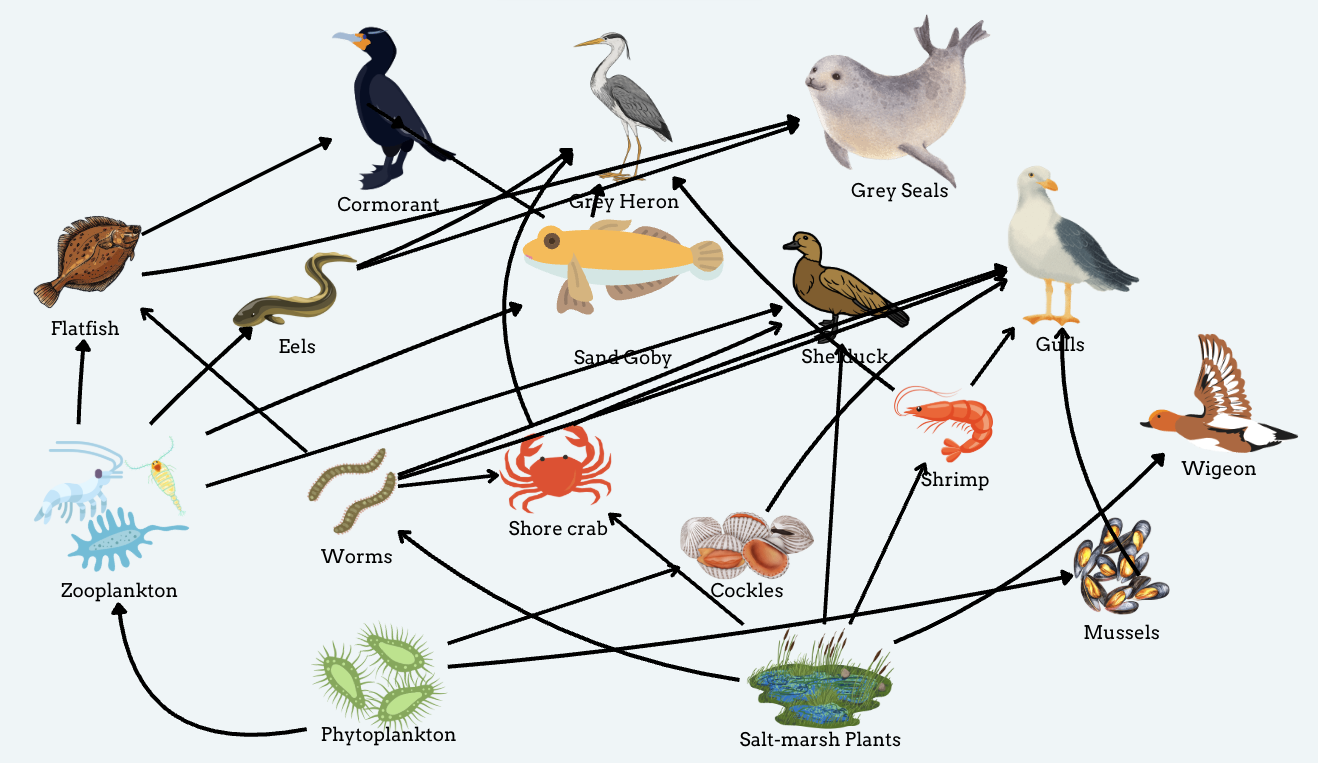Food Chains and Food Webs on the Mersey: A Close Look at the Shelduck’s Role

The River Mersey is not only famous for its cultural history and industrial past—it’s also home to a rich and dynamic ecosystem. Hidden beneath the water’s surface and along the salt-marsh edges lies a world of interconnections, where creatures rely on one another for survival in an intricate web of life. One key player in this ecosystem is the shelduck, a striking waterfowl often spotted along the estuary’s muddy shores.
Understanding Food Chains and Food Webs
A food chain shows a direct line of who eats whom, often beginning with a producer like a plant and ending with a top predator. However, in natural habitats like the Mersey estuary, life isn’t so simple. Most organisms eat and are eaten by more than one other species, forming a food web—a more accurate picture of nature’s interconnectedness.

Shelduck in the Food Web
The shelduck (Tadorna tadorna) might look serene as it glides across the mudflats, but it plays a vital role as both predator and prey in the Mersey’s food web. According to the illustrated food web:
- What shelducks eat:
Shelducks are voracious feeders, relying heavily on shore crabs, worms, shrimp, and cockles. These are all invertebrates found in the intertidal mud and salt-marsh zones. Their specialized bills help them sift through the sediment to extract these small but nutritious animals. - What eats shelducks:
While adult shelducks face few predators due to their size, grey seals and gulls may pose a threat—particularly to young or weakened birds.
The Broader Ecosystem: What Connects to What?
The shelduck’s diet connects it to several other animals in the ecosystem:
- Worms and cockles, for instance, feed on detritus, salt-marsh plants, and phytoplankton—the microscopic plants that are the base of many aquatic food chains.
- Shrimp and shore crabs are also omnivores, feeding on detritus, smaller plankton, and even one another.
- In turn, these species are also consumed by sand gobies, flatfish, grey herons, cormorants, and seals, showing just how interwoven these lives are.
Why Does It Matter?
The Mersey Estuary is a Site of Special Scientific Interest (SSSI) for good reason. The food web demonstrates the delicate balance of biodiversity, where disrupting one link—such as a drop in worm populations due to pollution—can ripple through the system and affect species like the shelduck.
Protecting habitats like the Mersey’s mudflats is not just about preserving individual species; it’s about maintaining a web of life that sustains birds, fish, invertebrates, and even us, through the ecosystem services they provide.
In Conclusion
From phytoplankton to grey seals, the Mersey Estuary is alive with complex food relationships. The shelduck is just one thread in this intricate web—but by studying it, we glimpse the bigger picture of interdependence in nature. Whether you’re a birdwatcher, a biology student, or simply someone who loves the outdoors, there’s something magical about understanding the hidden lives of the creatures that call the Mersey home.